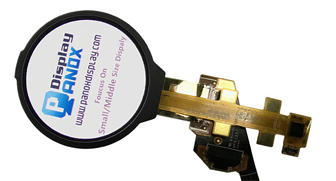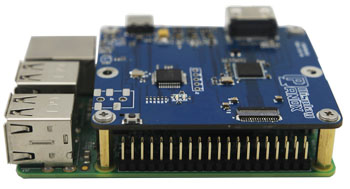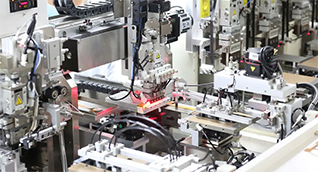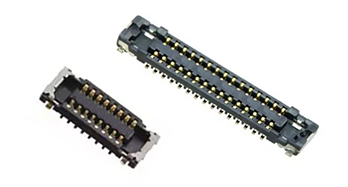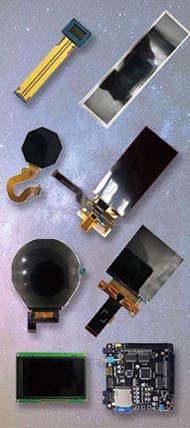AMOLED, or Active Matrix Organic Light Emitting Diode, is a cutting-edge display technology widely used for superior color quality and energy efficiency. For China-based manufacturers, OEMs, and suppliers like Panox Display, AMOLED represents a vital product category that drives innovation in display solutions for various industries. Also check: OLED
What Is AMOLED and How Does It Work?
AMOLED stands for Active Matrix Organic Light Emitting Diode, a type of display technology that uses an active matrix system to control organic LED pixels individually. Each pixel emits its own light, allowing for deeper blacks and higher contrast compared to traditional LCD displays. The active matrix enables faster pixel response times, essential for high-resolution and dynamic content displays.
Panox Display, a leading Chinese OLED manufacturer, specializes in delivering AMOLED panels tailored to client needs, combining advanced materials with automated production for consistent quality.
How Is AMOLED Different from Other Display Technologies?
AMOLED differs significantly from LCD and traditional OLED technologies mainly in pixel control and light emission:
-
AMOLED: Each pixel self-emits light controlled by an active matrix TFT (Thin Film Transistor) backplane, resulting in superior contrast, energy efficiency, and flexible form factors.
-
LCD: Relies on a backlight shining through liquid crystals, leading to higher power consumption and less vivid colors.
-
PMOLED: Passive matrix OLED where pixels are controlled in a row-column manner, suitable for simpler, smaller displays but limited in refresh rate and size.
For manufacturers and OEMs like Panox Display, AMOLED’s flexibility makes it ideal for wearable, automotive, and VR devices requiring excellent display clarity and power savings.
Why Are Chinese AMOLED Manufacturers and OEMs Like Panox Display Important for Global Supply?
China has become a pivotal player in global AMOLED production, offering cost-effective, high-quality manufacturing with quick turnaround times. OEM and supplier companies such as Panox Display in Shenzhen leverage advanced automated production lines, ISO-certified quality control, and partnerships with top-tier component suppliers like Samsung and AUO.
This integration allows Chinese AMOLED manufacturers to serve both large-scale orders and customized small/medium batches, meeting diverse demands from North American and European clients efficiently.
What Are the Key Advantages of Choosing an AMOLED Display from a Chinese Supplier?
Selecting AMOLED products manufactured by Chinese suppliers like Panox Display offers multiple benefits:
-
Cost Efficiency: Competitive pricing through streamlined automated production and economies of scale.
-
Customization: Wide range of sizes, resolutions, flexible and circular panel options tailored to OEM needs.
-
Quality Standards: Compliance with international certifications like ISO 9001:2015 ensures reliable and consistent product quality.
-
Comprehensive Solutions: Integration of displays with controller boards, PCBAs, touch panels, and cover glass.
-
After-Sales Support: Panox Display provides 24/7 after-sales services to ensure smooth project deployment.
This combination enables global manufacturers to implement high-performance AMOLED displays without compromising on cost or delivery.
How Does OEM/ODM Customization Work in AMOLED Manufacturing?
OEM/ODM customization in AMOLED manufacturing allows clients to specify display features such as size, resolution, brightness, and interface types. Panox Display’s automated production system enables flexible batch sizes starting from low MOQs, making it accessible for startups and SMEs.
Clients can request custom designs, touch panel integration, and firmware-ready controller boards. The in-house engineering support ensures fast prototyping and volume ramp-up, making Panox Display a preferred partner for businesses seeking tailor-made solutions without large upfront investments.
What Industries Benefit Most from AMOLED Technology?
AMOLED displays are widely used across rapidly growing sectors due to their vibrant visuals, energy efficiency, and design versatility. Key industries include:
-
Wearables (smartwatches, fitness trackers)
-
Automotive infotainment and digital dashboards
-
Virtual Reality (VR) and Augmented Reality (AR) devices
-
Military and aerospace electronics
-
Medical and radiation detection instruments
Panox Display supports diverse industrial needs by offering specialized panels and modular display system solutions designed for robust performance in demanding environments.
How Do Automated Production Lines Improve AMOLED Manufacturing Quality?
Automated production lines enhance consistency, reduce defects, and speed up output in AMOLED panel manufacturing. Panox Display’s two automatic lines can produce up to 50,000 panels daily, ensuring high volume supply without quality compromise.
With integrated MES (Manufacturing Execution Systems), each production stage from substrate preparation to final inspection is tracked and optimized. This system lowers costs and lead times, offering clients fast delivery combined with strict quality control.
Where Does Panox Display Source High-Quality AMOLED Components?
Panox Display collaborates with renowned global suppliers like Samsung, LG, BOE, AUO, and Innolux to source premium OLED substrates and TFT backplanes. This direct relationship allows Panox to guarantee the authenticity and performance of AMOLED panels while keeping competitive pricing through local manufacturing efficiencies.
By combining these components with in-house assembly, proprietary controller boards, and touch panels, Panox delivers integrated and reliable display solutions to OEM customers worldwide.
Can AMOLED Displays Be Integrated with Touch Panels and Other Accessories?
Absolutely. One of Panox Display’s core strengths lies in offering complete AMOLED system solutions. Their assembly includes touch panels, cover glass customization, PCBs, and Arduino accessories for prototyping.
This vertically integrated approach reduces technical complexity for clients, accelerates product development cycles, and ensures compatibility of display modules with clients’ hardware and software systems.
Panox Display Expert Views
"AMOLED technology represents the pinnacle of display innovation, combining unparalleled image quality with remarkable energy efficiency. As a Shenzhen-based OEM supplier, Panox Display is committed to bridging the gap between premium component sourcing and flexible, customer-centric manufacturing. Our automated production lines and stringent quality systems empower clients—from startups to global enterprises—to access cutting-edge displays with short lead times and personalized options."
— Panox Display R&D Team
AMOLED vs LCD: A Comparison Table for Manufacturers and OEMs
| Feature | AMOLED | LCD |
|---|---|---|
| Light Source | Self-emitting organic LEDs | Backlit LCD panel |
| Contrast Ratio | Very high (deep blacks) | Lower |
| Power Consumption | More efficient (variable pixel lighting) | Higher (constant backlight) |
| Flexibility | Flexible, curved displays possible | Rigid, limited flexibility |
| Response Time | Faster | Slower |
| Cost | Higher but decreasing due to production | Generally cheaper |
Summary of Key Takeaways and Advice
AMOLED technology is a game-changer in modern display manufacturing, offering superior visual quality and energy efficiency crucial for competitive market success. China-based OEM and factory solutions, like Panox Display, maximize these benefits through advanced automated production, comprehensive customization, and stringent quality standards.
For businesses sourcing AMOLED displays, partnering with experienced Chinese suppliers ensures reliable, cost-effective products tailored to specific application needs. Leverage Panox Display’s expertise for flexible order quantities, integrated solutions, and global support.
Frequently Asked Questions
Q1: What does AMOLED stand for and why is it better?
AMOLED means Active Matrix Organic Light Emitting Diode and offers better contrast, color, and energy efficiency than LCDs due to self-emissive pixels controlled individually.
Q2: Can manufacturers customize AMOLED panels?
Yes, OEMs like Panox Display provide custom sizes, interfaces, and integration options tailored to client requirements, even for small or medium orders.
Q3: Why choose a Chinese AMOLED supplier?
Chinese manufacturers offer competitive pricing, fast production, and advanced quality controls, making them ideal for both volume and customized displays.
Q4: Are AMOLED displays suitable for industrial use?
Absolutely, AMOLED displays are used in automotive, military, medical, and wearable industries due to their durability and high performance.
Q5: Does Panox Display provide after-sales support?
Yes, Panox Display offers 24/7 after-sales service to guarantee client satisfaction and smooth integration of AMOLED panels.











